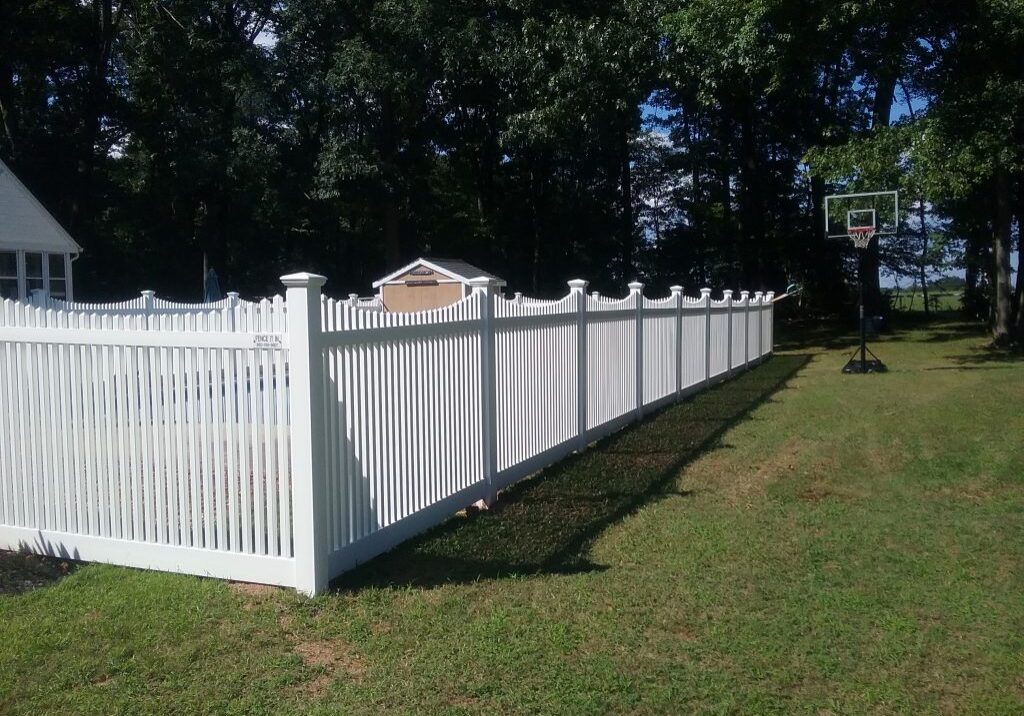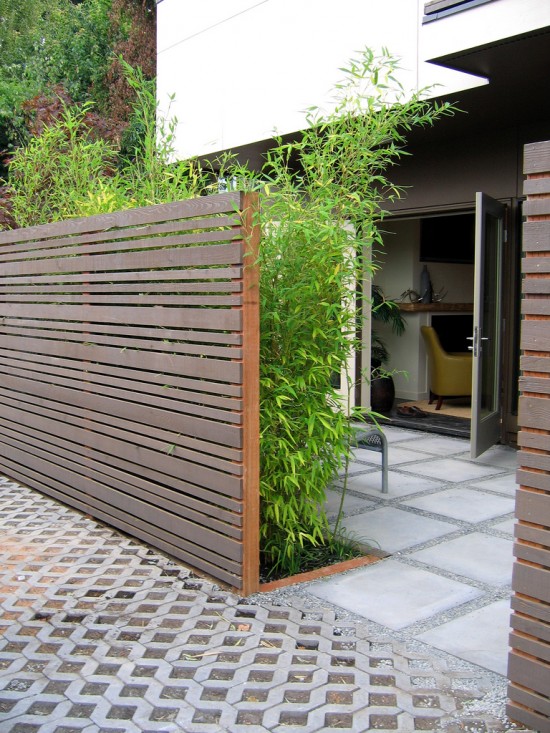All Categories
Featured
While a tall fence might appear like the best choice, the suitable elevation depends on several aspects, including safety and security demands, local policies, and the materials used. Listed below, we'll describe vital factors to consider to aid you pick the excellent fencing height for optimal safety.
![]()
If you reside in a community controlled by a home owners' organization (HOA), you ought to also assess any certain guidelines they have for fencing height, design, and products. Following these regulations guarantees you stay clear of lawful concerns and maintain an excellent partnership with your next-door neighbors.
Taller fencings are harder to scale and can considerably decrease the likelihood of burglaries. Including features like sharp tops, barbed cable, and even electric fence can better boost the barrier's safety and security. A fence that reaches 8 feet or higher is often efficient at avoiding most people from quickly jumping over it.
![]()
Wooden Fences: While wooden fencings supply personal privacy, they can be very easy to climb, specifically if there are no anti-climb attributes. For optimal safety, take into consideration a wood fencing that's 6 to 8 feet tall with sharp tops or trellis extensions that make it harder to scale. Chain-Link Fences: Chain-link fencings are commonly a lot more budget-friendly and durable than wood, and they can be developed to the essential height for protection. To increase deterrence, take into consideration adding barbed or razor wire ahead. These functions discourage climbing and make the fencing extra challenging to violation. Wrought Iron Fences: Wrought iron fencings are commonly made use of for high-security functions as a result of their stamina and toughness. Their upright bars make it tough to climb, and they can be created to 6 to 8 feet high with additional spikes or ornamental anti-climb features to additional secure the boundary. Plastic Fences: Plastic is an exceptional choice if you need a strong, private fencing, however like wood, plastic fences may need extra height or safety features to prevent climbing up. Choose a fence that is at the very least 6 feet high to guarantee privacy and security. Each material provides various benefits in regards to appearances, sturdiness, and maintenance, so it's vital to consider your certain needs and choices when choosing a fencing.
Anti-Climb Features: Installing sharp or sharp tops, trellis extensions, or safety and security spikes on top of the fence makes it more hard for anybody to scale the fencing. These functions serve as a strong deterrent to potential intruders. Barbed or Razor Cable: Including barbed wire or razor cable at the top of your fencing boosts security considerably. This is typically utilized in high-security areas, such as commercial residential properties, yet can likewise be an excellent choice for properties in risky areas. Electric Secure fencing: For high-level security, you might want to think about adding an electrical fence to your building. Electric secure fencing, when installed effectively, can produce a strong deterrent while remaining reasonably very discreet. It delivers a moderate shock to any person who tries to touch or climb the fence. Integrating height with these additional attributes makes certain that your fencing provides the highest degree of safety.
Balancing the need for privacy and security while preserving the aesthetic charm of your property can help you choose the ideal height and material for your fencing. Make certain that your fence complements the overall style of your home and does not negatively affect the curb charm.
![]()
By thoroughly considering all these elements, you can develop a safe and secure, exclusive, and eye-catching limit around your building that supplies both satisfaction and security.

- Understand Local Regulations and Zoning Rules. The initial step in selecting your fence height is to familiarize yourself with neighborhood regulations. Many communities have zoning legislations that determine the optimum permitted height for fences, especially ahead lawns and along building lines. Generally, front backyard fences are limited to 3 to 4 feet, while yard fencings can be as tall as 6 to 8 feet or even more. Some locations might call for an authorization for fences over a specific height, so it's critical to consult your regional zoning office before beginning building.
If you reside in a community controlled by a home owners' organization (HOA), you ought to also assess any certain guidelines they have for fencing height, design, and products. Following these regulations guarantees you stay clear of lawful concerns and maintain an excellent partnership with your next-door neighbors.
- Figure Out the Preferred Degree of Security. The level of protection you need is a significant element in identifying the ideal fence height. A fencing height of 6 to 8 feet is usually advised for optimal security.
Taller fencings are harder to scale and can considerably decrease the likelihood of burglaries. Including features like sharp tops, barbed cable, and even electric fence can better boost the barrier's safety and security. A fence that reaches 8 feet or higher is often efficient at avoiding most people from quickly jumping over it.
- Select the Right Product for Your Fencing. The material of your fence plays a crucial role in its ability to provide protection. While taller fences are better for safety, the kind of material you make use of can impede the effectiveness or boost of the elevation. Below are some popular fencing materials for safety and security:

Wooden Fences: While wooden fencings supply personal privacy, they can be very easy to climb, specifically if there are no anti-climb attributes. For optimal safety, take into consideration a wood fencing that's 6 to 8 feet tall with sharp tops or trellis extensions that make it harder to scale. Chain-Link Fences: Chain-link fencings are commonly a lot more budget-friendly and durable than wood, and they can be developed to the essential height for protection. To increase deterrence, take into consideration adding barbed or razor wire ahead. These functions discourage climbing and make the fencing extra challenging to violation. Wrought Iron Fences: Wrought iron fencings are commonly made use of for high-security functions as a result of their stamina and toughness. Their upright bars make it tough to climb, and they can be created to 6 to 8 feet high with additional spikes or ornamental anti-climb features to additional secure the boundary. Plastic Fences: Plastic is an exceptional choice if you need a strong, private fencing, however like wood, plastic fences may need extra height or safety features to prevent climbing up. Choose a fence that is at the very least 6 feet high to guarantee privacy and security. Each material provides various benefits in regards to appearances, sturdiness, and maintenance, so it's vital to consider your certain needs and choices when choosing a fencing.
- Add Protection Functions for Extra Defense. While height is essential, including additional safety functions to your fencing can enhance its efficiency. Think about the following additions:
Anti-Climb Features: Installing sharp or sharp tops, trellis extensions, or safety and security spikes on top of the fence makes it more hard for anybody to scale the fencing. These functions serve as a strong deterrent to potential intruders. Barbed or Razor Cable: Including barbed wire or razor cable at the top of your fencing boosts security considerably. This is typically utilized in high-security areas, such as commercial residential properties, yet can likewise be an excellent choice for properties in risky areas. Electric Secure fencing: For high-level security, you might want to think about adding an electrical fence to your building. Electric secure fencing, when installed effectively, can produce a strong deterrent while remaining reasonably very discreet. It delivers a moderate shock to any person who tries to touch or climb the fence. Integrating height with these additional attributes makes certain that your fencing provides the highest degree of safety.
- Take Into Consideration Privacy and Aesthetic Preferences. While safety and security should be your main worry, it's likewise essential to consider the aesthetic charm of your fencing. Tall fences may provide safety, yet they can in some cases show up imposing or hostile. If personal privacy is a worry, a solid timber or vinyl fence can provide both safety and security and seclusion, while a functioned iron fencing offers safety with an open view.
Balancing the need for privacy and security while preserving the aesthetic charm of your property can help you choose the ideal height and material for your fencing. Make certain that your fence complements the overall style of your home and does not negatively affect the curb charm.

- Final Ideas on Fence Height and Safety And Security. Selecting the right fencing height for ideal safety and security involves balancing a number of elements, consisting of local laws, the degree of safety and security needed, the material of the fence, and added security features. Generally, a fence elevation of 6 to 8 feet is suitable for many properties, with taller fences offering an included layer of protection for high-risk areas. Integrating the appropriate height with a tough, climb-resistant material and extra protection functions will certainly aid make certain that your fencing efficiently safeguards your home. When making your final choice., constantly check local codes and consider your personal privacy and aesthetic choices.
By thoroughly considering all these elements, you can develop a safe and secure, exclusive, and eye-catching limit around your building that supplies both satisfaction and security.
Latest Posts
Relish the Charm of Every Season at Deauville Inn: From Holiday Magic to Sunny Escapes
Published May 18, 25
2 min read
Discover Your Financial Partner at WyHy – Top Benefits for Your Money Goals
Published May 17, 25
1 min read
The Future-Proof Technique to Advertising
Published May 16, 25
1 min read
More
Latest Posts
Relish the Charm of Every Season at Deauville Inn: From Holiday Magic to Sunny Escapes
Published May 18, 25
2 min read
Discover Your Financial Partner at WyHy – Top Benefits for Your Money Goals
Published May 17, 25
1 min read
The Future-Proof Technique to Advertising
Published May 16, 25
1 min read